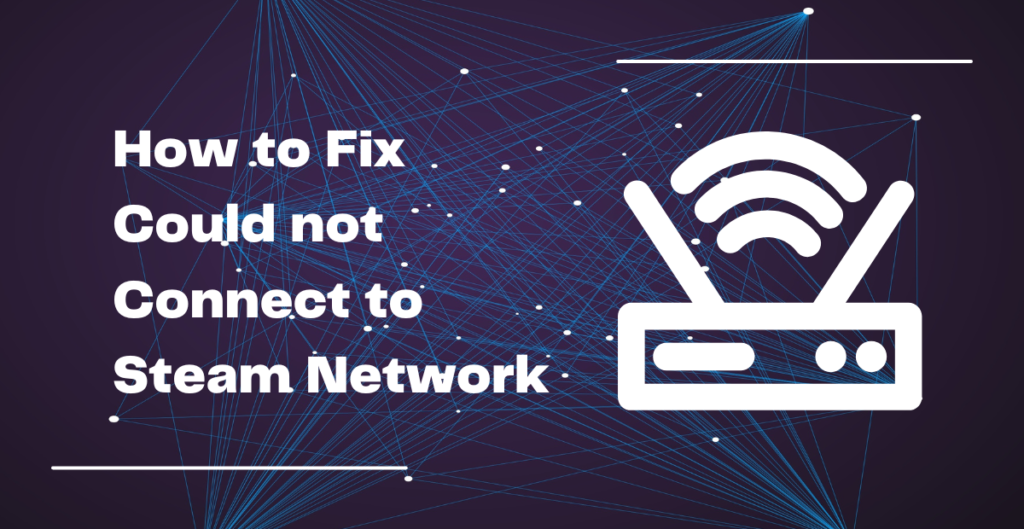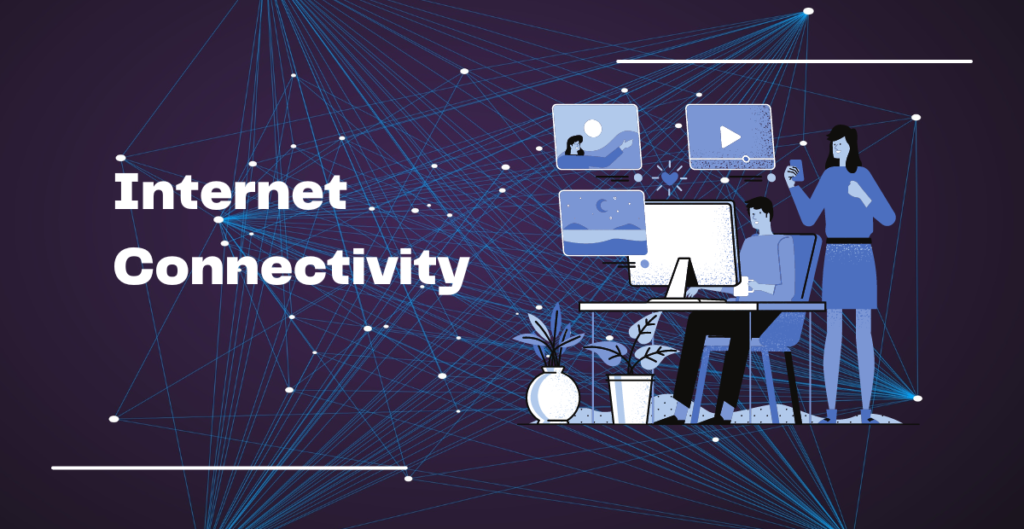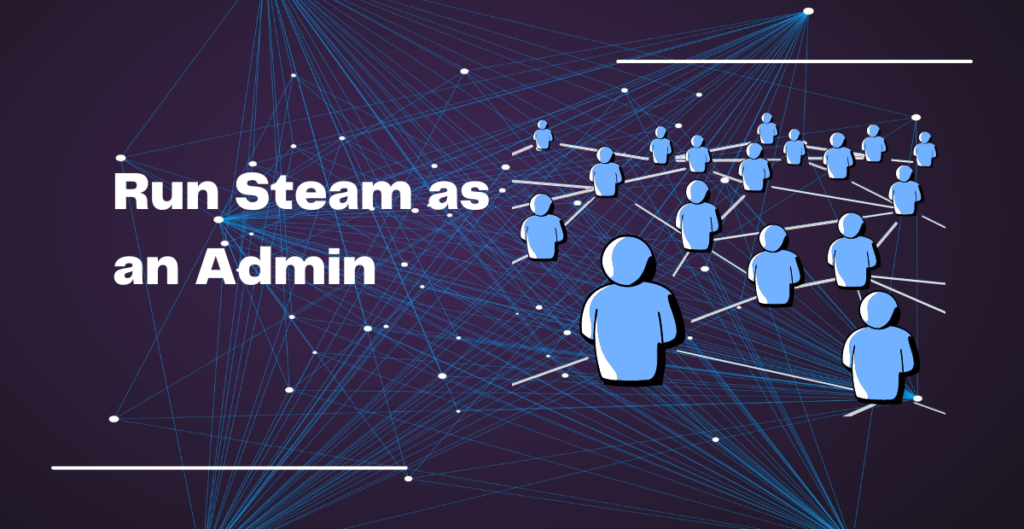
Cause(s) of Steam Network Errors
When trying to connect to the Steam network, users might experience errors that prevent them from accessing the platform. One of the most common issues is when users could not connect to the Steam network. Several factors can cause this problem, including issues with the user’s internet connection, firewall settings, or corrupted game files.
One of the leading causes of Steam network errors is a poor internet connection. When users try to connect to Steam with a slow or unstable connection, the platform may not load correctly, resulting in connection errors. To avoid this issue, users should ensure that their internet connection is stable and has sufficient bandwidth to support Steam’s network requirements.
Another factor that can cause Steam network errors is firewall settings. Firewalls are security measures that control the flow of network traffic in and out of a device. Sometimes, firewalls may block Steam’s network traffic, preventing the platform from loading correctly. To fix this issue, users should check their firewall settings and ensure that Steam is allowed to communicate over the network.
Lastly, corrupted game files can also cause Steam network errors. Corrupted files can cause Steam to crash or fail to launch, making it impossible to connect to the network. Users can fix this issue by verifying the integrity of game files through the Steam client. By doing this, Steam checks the files for errors and replaces any corrupted files, ensuring that the game launches correctly and connects to the network.
Fix Could Not Connect To Steam Network
When users experience the “could not connect to Steam network” error, several solutions can help fix the issue that users can follow to resolve this error:
- Check your internet connection: As mentioned earlier, a weak or unstable internet connection can cause this error. Therefore, users should ensure that their internet connection is stable and has sufficient bandwidth to support Steam’s network requirements.
- Check your firewall settings: Sometimes, firewalls may block Steam’s network traffic, causing connection errors. To fix this issue, users should check their firewall settings and ensure that Steam is allowed to communicate over the network.
- Restart your computer: Sometimes, a simple restart can fix connection issues. Users should restart their computer and try connecting to Steam again.
- Check for updates: Outdated versions of Steam or games can cause connection errors. Users should check for updates and ensure that they have the latest versions of Steam and their games.
- Clear Steam cache: Clearing Steam’s cache can sometimes fix connection errors. To do this, users should navigate to Steam’s settings, select “Downloads,” and click on “Clear Download Cache.”
- Change internet protocol: In some cases, changing the internet protocol can help fix Steam network errors. Users should try changing the internet protocol from IPv6 to IPv4 or vice versa and check if the issue persists.
By following these troubleshooting steps, users can fix the “could not connect to Steam network” error and access the platform without any further issues.
Change the Internet Protocol
As mentioned earlier, changing the internet protocol can help fix Steam network errors. Sometimes, network providers may prioritize one protocol over the other, causing connection issues for users. In such cases, changing the internet protocol can help users connect to Steam’s network. Here’s how to change the internet protocol on Windows:
- Click on the Windows start button and type “Control Panel” in the search bar.
- Select “Network and Internet” from the Control Panel options.
- Click on “Network and Sharing Center.”
- Click on “Change adapter settings.”
- Right-click on the network connection you are using and select “Properties.”
- Scroll down and select “Internet Protocol Version 4 (TCP/IPv4).”
- Click on “Properties.”
- Select “Use the following IP address” and enter the IP address and subnet mask provided by your network provider.
- Select “Use the following DNS server addresses” and enter the DNS server addresses provided by your network provider.
- Click on “OK” to save the changes.
By following these steps, users can change the internet protocol and connect to Steam’s network without any issues. However, if the problem persists, users should contact their network provider or Steam support for further assistance.
In conclusion, when users encounter Steam network errors, they should try troubleshooting steps such as checking their internet connection, firewall settings, and verifying game files. If these steps do not work, changing the internet protocol can help fix the issue. By following these steps, users can connect to Steam’s network and enjoy uninterrupted gaming sessions.
Restart Your Steam Connection
If you are experiencing issues with connecting to Steam, one of the first things you can try is restarting your Steam connection. Sometimes, Steam may encounter issues while attempting to connect, and restarting the connection may help resolve the issue. To restart your Steam connection, follow these steps:
- Open the Steam client on your computer.
- Click on the “Steam” option in the top left corner of the screen.
- Select “Settings” from the dropdown menu.
- Click on the “Downloads” tab.
- Click on the “Clear Download Cache” button.
- Once the cache has been cleared, exit the Steam client and restart it.
By restarting your Steam connection, you may be able to resolve the issue and connect to the network without encountering any further problems.
Troubleshoot your Network
Another common cause of connection issues with Steam is problems with your network. There may be issues with your router or modem, or there could be other network-related issues that are causing problems with your connection. Here are a few things you can try to troubleshoot your network:
- Check your network settings: Make sure that your network settings are configured correctly. You may need to contact your network provider to ensure that your settings are correct.
- Disable your firewall: Sometimes, firewalls can block your connection to Steam. Try disabling your firewall temporarily to see if this resolves the issue.
- Reset your router or modem: Sometimes, simply resetting your router or modem can resolve connection issues. Unplug the device, wait a few minutes, and then plug it back in.
- Try a wired connection: If you are using a wireless connection, try connecting your computer to your router or modem using an ethernet cable. This can sometimes improve connection stability and speed.
By troubleshooting your network, you may be able to resolve any issues that are preventing you from connecting to the Steam network.

Internet Connectivity
If you are experiencing issues with connecting to the Steam network, another potential cause could be problems with your internet connectivity. Here are a few things you can try to improve your internet connectivity:
- Check your internet speed: Make sure that your internet speed is sufficient to support the Steam network. You can test your internet speed using a variety of online tools.
- Update your drivers: Make sure that your network drivers are up-to-date. Outdated drivers can cause connection issues.
- Limit background processes: Make sure that there are no unnecessary processes running in the background that could be hogging your bandwidth.
- Disconnect other devices: If there are other devices connected to your network, disconnect them temporarily to see if this improves your connection speed.
By improving your internet connectivity, you may be able to resolve the issue of not being able to connect to the Steam network.
Restart Your PC
If you have tried all of the above steps and are still experiencing issues with connecting to the Steam network, you may want to try restarting your computer. Sometimes, simply restarting your computer can resolve a variety of issues, including network connectivity issues. Here are the steps to follow:
- Close all open programs.
- Click on the Windows Start button.
- Click on the “Power” option.
- Select “Restart” from the dropdown menu.
- Wait for your computer to restart.
- Open the Steam client and try connecting to the network again.
By restarting your PC, you may be able to resolve any lingering issues that are preventing you from connecting to the Steam network.
Reinstall Steam Client
If you are unable to connect to the Steam network, it may be due to a corrupted installation of the Steam client. In such cases, it may be necessary to reinstall the client to resolve the issue. Here are the steps to follow:
- Uninstall the Steam client: Go to the Control Panel, select “Programs and Features,” and then select “Steam.” Click on “Uninstall.”
- Delete remaining files: Navigate to the Steam installation folder on your computer (typically located in C:\Program Files (x86)\Steam) and delete all remaining files.
- Download and install the Steam client: Go to the official Steam website, download the client, and install it on your computer.
By reinstalling the Steam client, you can ensure that any corrupted files or settings are removed, allowing for a fresh installation that should be free of any connection issues.
Interference From Background Apps
Sometimes, other applications running in the background can interfere with the Steam client and prevent it from connecting to the network. Here are a few things you can try to minimize interference from background apps:
- Close unnecessary applications: Close all unnecessary applications running in the background to free up system resources.
- Disable antivirus software: Antivirus software can sometimes interfere with Steam connections. Try disabling your antivirus temporarily to see if this resolves the issue.
- Disable VPNs: Virtual private networks (VPNs) can sometimes interfere with Steam connections. Disable your VPN temporarily to see if this resolves the issue.
By minimizing interference from background apps, you may be able to resolve any issues preventing you from connecting to the Steam network.

Run Steam as an Admin
If you are still experiencing issues with connecting to the Steam network, it may be necessary to run Steam as an administrator. This will give Steam elevated privileges and may help it bypass any issues that are preventing it from connecting. Here are the steps to follow:
- Right-click on the Steam shortcut on your desktop.
- Select “Properties” from the dropdown menu.
- Click on the “Compatibility” tab.
- Check the box that says “Run this program as an administrator.”
- Click “Apply” and then “OK.”
- Start Steam and try connecting to the network again.
By running Steam as an administrator, you may be able to resolve any issues related to access privileges that are preventing you from connecting to the Steam network.
Router and Modem Issues
If you are experiencing connection issues when trying to connect to the Steam network, it could be due to issues with your router or modem. Here are some steps you can follow to troubleshoot these issues:
- Restart your router and modem: Sometimes, simply restarting your router and modem can resolve connectivity issues. Unplug both devices from the power source for about 30 seconds, then plug them back in and wait for them to restart.
- Check your network settings: Check your network settings to ensure that your router and modem are properly configured. Make sure that your router’s firmware is up to date, and that you have the correct network settings configured in your modem.
- Check your internet connection: Make sure that your internet connection is working properly. Check that your modem is connected to the internet and that you have a strong signal.
By troubleshooting these issues, you may be able to resolve any problems with your router or modem that are preventing you from connecting to the Steam network.
Disable Your Windows Firewall
If you are still experiencing issues with connecting to the Steam network, it may be necessary to disable your Windows firewall temporarily. The Windows firewall can sometimes block connections to Steam, so disabling it can help you determine if it is the cause of the problem. Here are the steps to follow:
- Click on the Windows Start button and type “Windows Defender Firewall” in the search bar.
- Click on “Windows Defender Firewall with Advanced Security.”
- Click on “Inbound Rules” and then click “New Rule.”
- Select “Program” and click “Next.”
- Click “Browse” and navigate to the Steam installation folder (usually located in C:\Program Files (x86)\Steam) and select “Steam.exe.”
- Click “Next” and then “Allow the connection.”
- Name the rule “Steam” and click “Finish.”
- Click on “Outbound Rules” and repeat the process for outgoing connections.
By disabling your Windows firewall temporarily, you can determine if it is causing the issue with connecting to the Steam network. If this resolves the issue, you can then re-enable the firewall and create an exception for Steam to ensure that it can connect without any issues in the future.
Physical Network Connection
If you are unable to connect to the Steam network, it may be due to physical issues with your network connection. Here are some steps you can take to troubleshoot this problem:
- Check your Ethernet cable: If you are using a wired connection, check your Ethernet cable to make sure it is properly connected to your computer and router/modem. If it is loose or damaged, it could be causing connectivity issues.
- Restart your modem and router: Sometimes, restarting your modem and router can resolve physical connection issues. Unplug both devices from the power source for about 30 seconds, then plug them back in and wait for them to restart.
- Check your network adapter: Check your network adapter settings to ensure that it is properly configured. Make sure that the network adapter driver is up to date and that it is enabled.
By troubleshooting these physical network connection issues, you may be able to resolve any problems that are preventing you from connecting to the Steam network.
ISP Experiencing Outages
If you are experiencing connectivity issues with Steam, it may be due to outages or other issues with your internet service provider (ISP). Here are some steps you can take to troubleshoot this problem:
- Check for outages: Check your ISP’s website or social media pages for any announcements regarding outages or service disruptions in your area.
- Contact your ISP: If you are still unable to connect to the Steam network, contact your ISP’s customer support to report the issue and request assistance.
- Use a different internet connection: If possible, try connecting to Steam using a different internet connection, such as a mobile hotspot or a different ISP. This can help you determine if the issue is specific to your current ISP.
By taking these steps, you can determine if the issue with connecting to Steam is due to outages or other issues with your ISP. If necessary, you can work with your ISP to resolve any issues that are preventing you from connecting.
Download a New Driver
If you are experiencing connectivity issues with Steam, it may be due to outdated or corrupt network adapter drivers. Here are some steps you can take to troubleshoot this problem:
- Check for updates: Check your computer’s device manager to see if there are any updates available for your network adapter driver.
- Download a new driver: If there are no updates available or if updating the driver does not resolve the issue, download a new driver from your network adapter manufacturer’s website.
- Install the new driver: Once you have downloaded the new driver, install it and restart your computer to ensure that the changes take effect.
By updating or installing a new network adapter driver, you may be able to resolve any connectivity issues that are preventing you from connecting to the Steam network.
Steam Client Updates
If you are experiencing connectivity issues with Steam, it may be due to outdated or corrupt Steam client software. Here are some steps you can take to troubleshoot this problem:
- Check for updates: Check for any updates available for the Steam client software. If an update is available, download and install it.
- Clear your Steam cache: Clearing your Steam cache can help resolve any issues with the Steam client software. To clear your Steam cache, go to Steam > Settings > Downloads > Clear Download Cache.
- Reinstall Steam: If updating and clearing your cache do not resolve the issue, try reinstalling the Steam client software. To do this, uninstall Steam from your computer and then download and install the latest version from the Steam website.
By updating or reinstalling the Steam client software, you may be able to resolve any connectivity issues that are preventing you from connecting to the Steam network.
Possible Winsock Issues
Winsock is a programming interface that allows programs to communicate with other programs over the internet. If you are experiencing connectivity issues with Steam, it may be due to Winsock issues. Here are some steps you can take to troubleshoot this problem:
- Use netsh to reset Winsock: Open the Command Prompt as an administrator and type the following command: netsh winsock reset. Press Enter and wait for the command to complete. Restart your computer to ensure that the changes take effect.
- Check for malware: Malware can cause Winsock issues. Use your antivirus software to scan your computer for malware and remove any detected threats.
- Reinstall network drivers: Reinstalling your network drivers can help resolve Winsock issues. To do this, open the Device Manager and right-click on your network adapter. Select Uninstall device and then restart your computer. Windows will automatically reinstall the drivers.
Reset your TCP/IP Stack
The TCP/IP stack is a collection of protocols that govern the way data is transmitted over the internet. If you are experiencing connectivity issues with Steam, it may be due to issues with your TCP/IP stack. Here are some steps you can take to troubleshoot this problem:
- Use netsh to reset TCP/IP: Open the Command Prompt as an administrator and type the following command: netsh int ip reset. Press Enter and wait for the command to complete. Restart your computer to ensure that the changes take effect.
- Use netsh to reset IPv6: Open the Command Prompt as an administrator and type the following command: netsh int ipv6 reset. Press Enter and wait for the command to complete. Restart your computer to ensure that the changes take effect.
- Verify Open Ports: Verify that the required ports for Steam are open on your computer. Steam requires the following ports to be open: 27014 through 27050, 3478, 4379, 4380. You can use port checking tools online to verify that the required ports are open.
By resetting your TCP/IP stack and verifying open ports, you may be able to resolve any connectivity issues that are preventing you from connecting to the Steam network.
Verify Open Ports
If you are unable to connect to the Steam network, it may be due to closed ports on your computer. Here are some steps you can take to troubleshoot this problem:
- Verify the required ports: Steam requires the following ports to be open: 27014 through 27050, 3478, 4379, 4380. Use port checking tools online to verify that the required ports are open on your computer.
- Check your firewall settings: Your firewall may be blocking the required ports for Steam. Check your firewall settings to ensure that the required ports are open.
- Configure your router: If you are using a router, you may need to configure it to forward the required ports to your computer. Consult your router’s documentation for instructions on how to do this.
By verifying open ports and ensuring that your firewall and router settings are configured correctly, you may be able to resolve any connectivity issues that are preventing you from connecting to the Steam network.
Reinstall Steam
If you have exhausted all other troubleshooting steps and are still unable to connect to the Steam network, you may need to reinstall the Steam client. Here’s how to do it:
- Backup your game files: Before you uninstall Steam, make sure to backup your game files to avoid losing any progress.
- Uninstall Steam: Go to the Control Panel and select Programs and Features. Find Steam on the list and click Uninstall. Follow the on-screen instructions to complete the uninstallation process.
- Delete leftover files: After uninstalling Steam, delete any leftover files from your computer. You can do this by going to the Steam installation folder and deleting all files and folders.
- Reinstall Steam: Download and install the latest version of Steam from the official website. Follow the on-screen instructions to complete the installation process.
Conclusion
In conclusion, if you are experiencing connection issues with Steam and are unable to connect to the Steam network, there are several steps you can take to troubleshoot the problem. By restarting your Steam connection, troubleshooting your network, changing your internet protocol, and running Steam as an admin, you may be able to resolve any connectivity issues.
In addition, router and modem issues, disabling your Windows firewall, downloading a new driver, and ensuring that your Steam client is up to date are also potential solutions to connection issues. If you are still unable to connect to the Steam network after trying these steps, it may be due to Winsock issues, TCP/IP stack issues, or closed ports on your computer.
Finally, if all else fails, you may need to reinstall the Steam client to resolve any connection issues. By following these troubleshooting steps, you can ensure that you have the best possible gaming experience on Steam without any connectivity issues.






